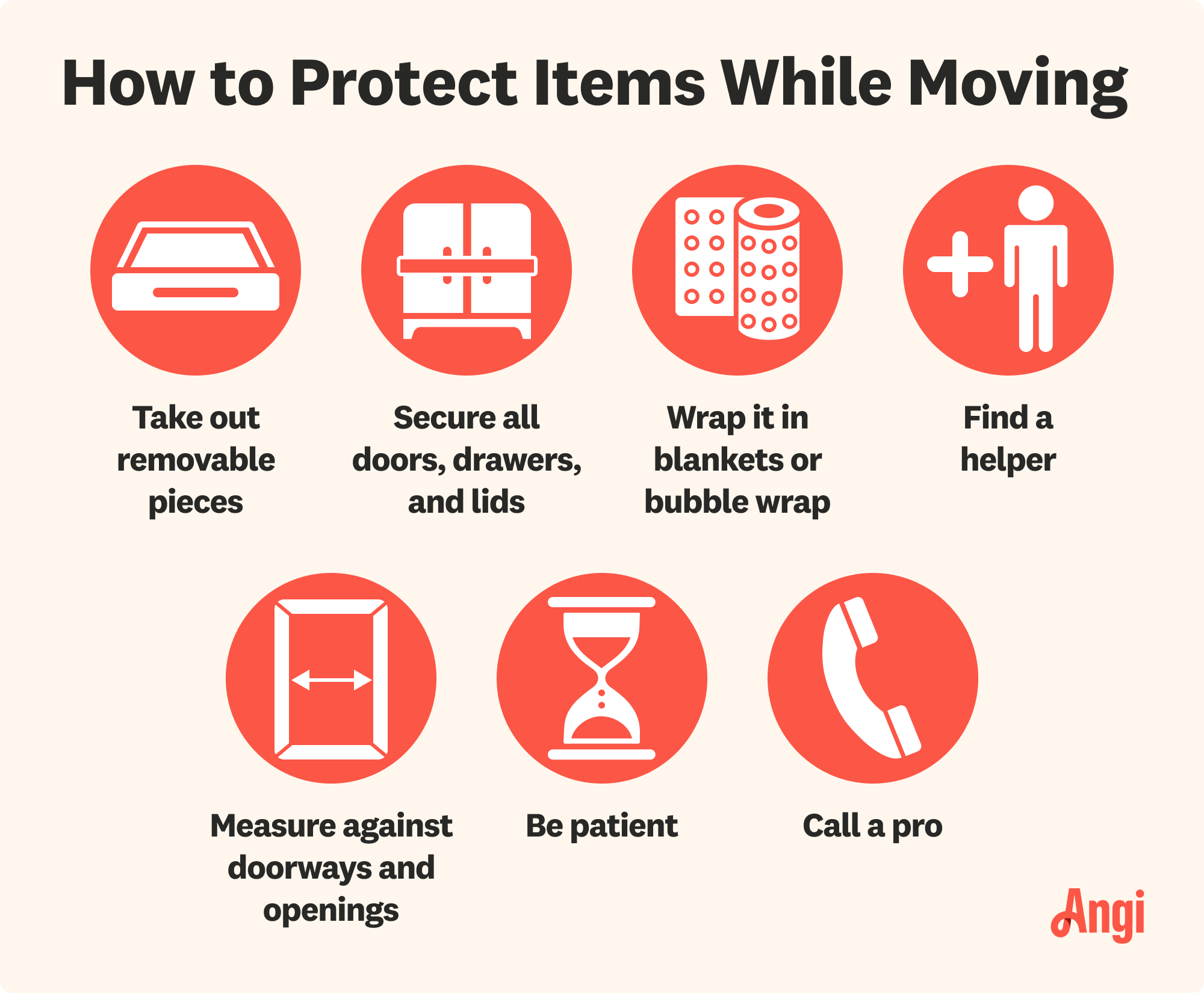How to Move a Refrigerator: 12 Tips for Safety and Efficiency
Get the cold, hard facts that’ll keep you and your fridge safe


Whether you're moving your fridge to a whole new location or simply need to access the space behind it, you'll want to move it safely. A refrigerator weighs hundreds of pounds, and taking precautions will help protect you from harm and prevent damage to your appliance and home. Follow these twelve tips on how to move a refrigerator before you set out to do it yourself.

1. Measure Carefully
Use a tape measure to record your refrigerator’s height, width, and depth. It needs to fit through all hallways and doorways on its route. If you’re moving it from one home to another, check the measurements in both locations. Clear furniture and decor out of the fridge’s route.
You may discover that you need to remove one of your home’s exterior doors to fit the fridge through an entry. In some cases, you’ll need to remove the refrigerator doors.
2. Get a Helping Hand
Never move a fridge alone. Having at least one other person to help steady the fridge and maneuver it through tight spaces will drastically reduce your chances of personal injury or damage to your property.
3. Allow Enough Time to Dry and Defrost
Disconnect the fridge from power, which starts the defrosting process. You should also disconnect any water lines. Have a towel handy to soak up water that leaks onto the floor as the ice thaws. Wait 24 hours after disconnecting the fridge to move it. This allows it to fully defrost and dry and for fluids and oil to settle.
4. Clean Thoroughly to Prevent Odors

Move any food you plan to save into an ice-packed cooler and dispose of the rest. While the fridge defrosts, air it out and clean the fridge thoroughly. Scrub away stuck-on food debris, use a disinfectant solution on all surfaces, and dry the interior completely. This will help prevent odors caused by rot or mildew. Deodorize with baking soda or activated charcoal if needed.
5. Secure Shelving, Hardware, and Cables
Take out all removable shelves and bins and pack them separately to avoid damage during the move. Roll up the power cord and water line and tape them securely to the side of the fridge so that they don't drag or get caught on anything. If you’re removing the refrigerator doors, safely pack them and carefully store all mounting hardware.
6. Protect Your Property With Covers and Sliders
Prepare your fridge for the move by taping the doors securely closed and covering the fridge with a moving blanket or packing material. This protects both the appliance and your walls. If you’re sliding the fridge out from a wall, tilt it very slightly so that you can lay a floor protector, flattened timber, or felt furniture sliders underneath. This will help the fridge slide smoothly and prevent damage to your floors.
7. Use a Hand Truck or Dolly
A hand truck is the ideal tool for moving a fridge through a home and onto a moving truck. You can also use a furniture dolly if a hand truck is unavailable. If you’re using a dolly, have one person tilt the fridge slightly while the other slides the base of the dolly under it. Tighten straps around the fridge to secure it to whichever tool you use.
8. Don't Tilt the Fridge Too Much
As you maneuver the fridge on its path, move slowly and keep it tilted at less than a 45-degree angle to help it stay balanced. Take any stairs one at a time, and make sure one person is below the fridge to help guide it up or down. If you’re moving the fridge on an incline, walk backward and pull the fridge.
9. Keep the Fridge Upright

Laying a fridge on its front or back can damage its internal cooling system and cause oil or refrigerant to settle in the wrong places. The best way to transport a fridge is upright in a vehicle that's tall enough to accommodate it. If you have no choice but to lay it down, do so on its side opposite from where the compressor lines are.
10. Secure the Fridge to the Truck Walls
The best vehicle for fridge transport is a truck with tall walls that you can strap the fridge to for support. Leave it strapped to the hand truck or dolly to make it easier to unload.
11. Wait Before Plugging the Fridge Back In
After you get the fridge to its new location, leave it unplugged for about 12 hours to allow all fluids in the system to settle properly. If you transported it on its side, allow at least 24 hours.
12. Hire Movers
It's important to move heavy furniture safely to avoid personal injury or property damage. The safest option is to hire professional movers with the right tools, equipment, and experience to move heavy furniture efficiently.
Moving a fridge can be a demanding task, and you may lack the time, tools, strength, or desire to do it safely on your own. You can hire local movers to handle the job for you. Compare quotes and hire a well-reviewed company that has experience with moving refrigerators.














